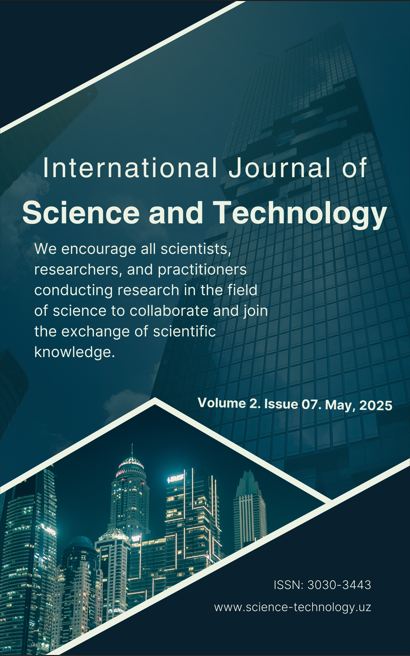Nashr qilingan 2025-05-16
Kalit so‘zlar
- vocabulary acquisition, B1 level learners, language learning, contextual learning, pronunciation, comprehension, listening-based instruction, ESL teaching.

This work is licensed under a Creative Commons Attribution-NonCommercial-NoDerivatives 4.0 International License.
How to Cite
Abstrak
Vocabulary acquisition is essential for B1-level learners to enhance their communication skills. One effective method of vocabulary instruction is through listening activities, which provide authentic language exposure and contextual learning. This paper explores strategies for teaching vocabulary through listening, including pre-listening, while-listening, and post-listening activities. It also discusses the selection of appropriate listening materials, such as podcasts, videos, and dialogues, to enhance learners' engagement and comprehension. Additionally, the study addresses common challenges, such as speech speed and vocabulary overload, and suggests practical solutions. By integrating listening-based vocabulary teaching, educators can facilitate effective learning, improve retention, and support learners in achieving greater language proficiency.
References
- Brown, H. D. (2007). Principles of Language Learning and Teaching (5th ed.). Pearson Education.
- Harmer, J. (2007). The Practice of English Language Teaching (4th ed.). Longman.
- Nation, I. S. P. (2013). Learning Vocabulary in Another Language (2nd ed.). Cambridge University Press.
- Rost, M. (2011). Teaching and Researching Listening (2nd ed.). Pearson Education.
- Schmitt, N. (2000). Vocabulary in Language Teaching. Cambridge University Press.
- Vandergrift, L., & Goh, C. C. M. (2012). Teaching and Learning Second Language Listening: Metacognition in Action. Routledge.
- Ismatova, N. M. (2021). Principles of toponyms classifications. Academic research in educational sciences, 2(3), 1025-1029.
- Makhmudovna, I. N. (2021). The relation between names and language. ACADEMICIA: An International Multidisciplinary Research Journal, 11(3), 1254-1256.
- Ismatova, N. THE SIGNIFICANCE OF TOPONYMS: A STUDY OF CULTURAL AND GEOGRAPHICAL IDENTITY. МУ АЛЛИМ ŒўМ ЗЛИКСИЗ БИЛИМЛЕНДИРИ², 216.
- Исматова, Н. М. (2017). Побудительные предложения в английском и в узбекском языках. Молодой ученый, (22), 472-473.
- Makhmudovna, I. N. (2022). Generallegislation of toponymics and the concept of toponymy. ACADEMICIA: An International Multidisciplinary Research Journal, 12(5), 704-706.
- Ismatova, N. M. (2022). TOPONYMS EXPRESSED IN ENGLISH WITH A COMPOUND NOUN WITH A COLOR COMPONENT. In Современные проблемы филологии и методики преподавания языков: вопросы теории и практики (pp. 101-104).

